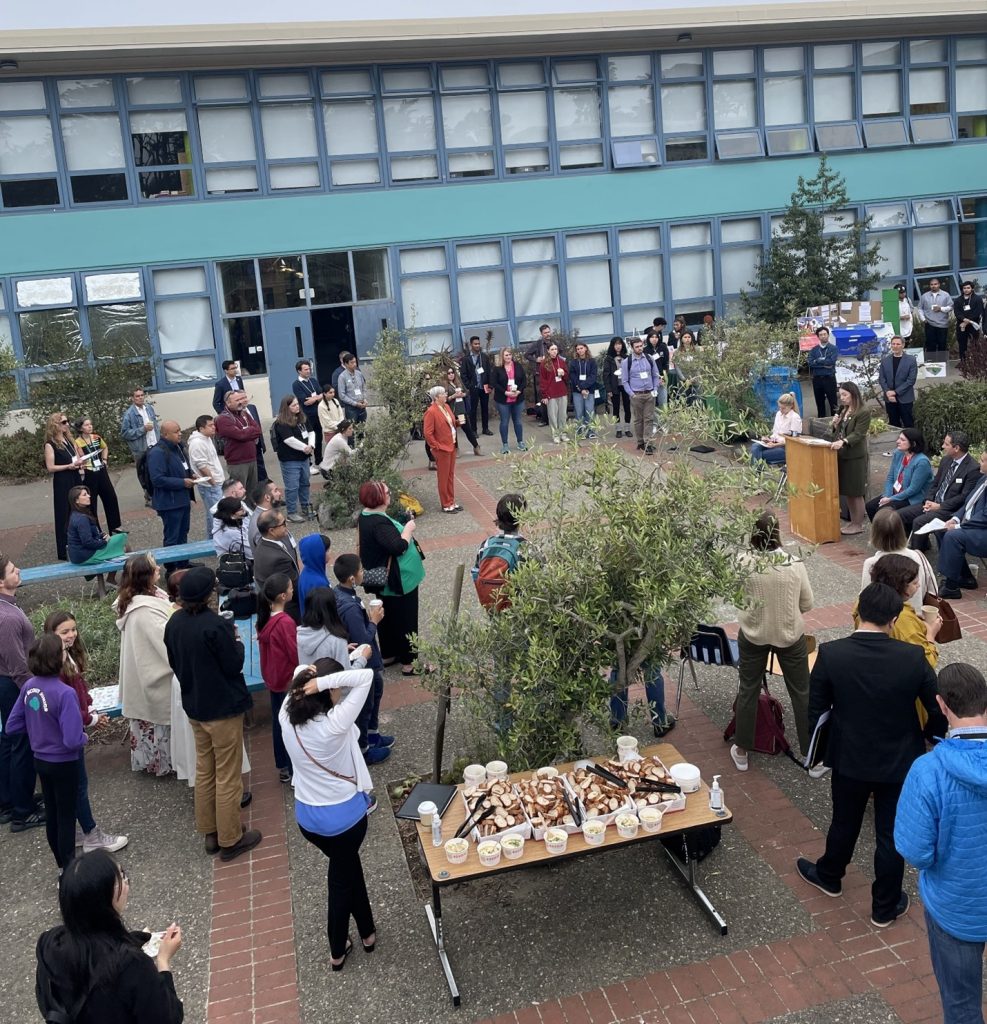[ad_1]
By: Naomi Stern, Federation of American Scientists Environmental Sustainability and Infrastructure Impact Fellow, U.S. Department of Education
This September, I had the honor of participating in the 2023 Green Strides Tour in California. As a fellow with the U.S. Department of Education, I knew that the schools and districts we would visit represent diverse examples of how sustainability is implemented. I was excited to see schools in my home state of California that have embedded sustainability across their school operations, resulting in improved learning and health conditions. Along the way, I encountered unparalleled passion, enthusiasm, and dedication on the part of entire school communities.
We kicked off the tour in San Francisco Unified School District with over 150 people participating. Speakers imparted a clear message: the Green Strides Tour raises the profile of schools and districts that have dedicated themselves to preparing students for a present where sustainability can no longer be an afterthought. At Sunset Elementary, first graders offered a pearl of wisdom: for even those who find gardening challenging, “there is a plant for everyone.
Just as there is a plant for everyone, we saw that there is a way of making every school more sustainable. Each of the U.S. Department of Education Green Ribbon Schools (ED-GRS) on the tour are making gains in three areas: 1) reducing environmental impacts and costs; 2) improving health and wellness; and 3) teaching effective environmental and sustainability education.
The tour next visited two sites in Alameda Unified School District: Bay Farm School and Edison Elementary School. Some achievements there included the transition to reusable metal school lunch trays, joyful garden programs, waste-saving share tables, activity-promoting walk and roll to school efforts, and an annual celebration of climate week.
To wrap up the day, at Bishop O’Dowd High, visitors heard how sustainability is integrated into campus, curriculum, and community. Locally based stakeholders, UndauntedK12 and Ten Strands hosted a triumphant reception. As the day closed, wildfires in the region provided an ominous reminder of the decreased air quality with which students and staff must often contend.
The second day of the tour featured Los Altos High School’s green buildings, improved bike lanes, wellness center, solar canopies, and electric vehicle charging stations. We then visited Woodside Priory’s 50-acre campus where staff and students bring hands-on sustainability projects to life, including a living wall, outdoor kitchen, garden, 800-square foot chicken enclosure, and contemplative labyrinth.
At Redwood High School, we witnessed CTE pathways connecting to sustainability and utilizing the campus’s food forest, the Redwood Environmental Academy of Leadership (REAL), an impressive school construction program spearheaded by a dedicated local craftsman, and sampled garden grown produce. Altamont Creek Elementary School featured unique STEM offerings in collaboration with retired STEM professionals committed to teaching the next generation, a Certified Wildlife Habitat, and strategies that promote student wellness.
For the last day of the tour, I was thrilled to visit Central California, an area that is acutely experiencing the environmental health challenges of climate change. First, we visited Quail Lake Environmental Charter School, where all students benefit from copious outdoors time whether through P.E. or agriculture classes, and middle school students set the tone for all grades through various leadership initiatives. Next, at Merced Union High School District, we learned about CTE programs that infuse sustainability considerations and prepare students for well-paid careers, such as fire services, medical technology, culinary, horticulture, agriculture, and clean energy.
As we drove away from our final stop, I felt deeply inspired by the schools across my home state. They are each finding locally appropriate ways to meet the needs of students and communities while becoming more climate resilient. During the tour, I met educators dedicated to ensuring students leave with the skills and knowledge to enact climate solutions. The committed professionals I encountered understood the immediate impact on teaching and learning of climate change and are taking action to prepare. As Bishop O’Dowd President Kim Walsh noted, this work is now “mission critical” for schools.

[ad_2]
Source link




